Arrive Delhi, the capital of India.
On your arrival at international airport in Delhi and after clearing customs & immigration, our representative will welcome you at the airport arrival lounge. You will be transferred to the hotel.
Delhi, the capital of kingdoms and empires is now a sprawling metropolis with a fascinating blend of the past and the present. It is a perfect introduction to the composite culture of an ancient land.
Stay overnight in The Imperial.
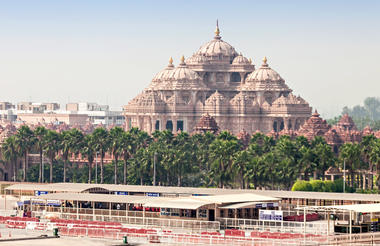

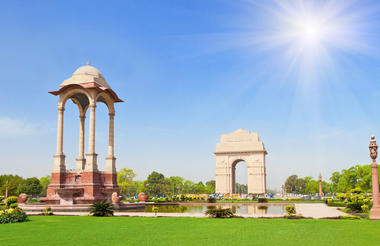
This morning we invite you to join our expert guide on an exploration trip to Delhi. Unlike a regular sightseeing tour, this trip offers you an opportunity to experience the soul of Delhi with its noises, smells, tastes.
Hop onto Delhi's most popular place and get transported to the times of the grandeur and subsequent ruin of the Mughal empire. Colourful, vibrant, noisy and chaotic are words that best describe what many call Old Delhi, the 7th city of Delhi, which was built by the mighty Mughal Emperor Shah Jahan. A traditional breakfast (complimentary) begins your day, after which we visit India's second largest & most aesthetically designed Mosque, the Jama Masjid. Then we walk through streets and markets of this 17th century imperial capital city of the Mughal empire where once royalty descended...where you savor the fragrances of the boisterous Spice Mkts, one of Asia's largest and be dazzled by the glitter of India's largest Jewelery markets and get a glimpse of the once glorious Havelis(Royal Mansions) of Old Delhi. With a mix of walking and rickshaw rides you discover hidden gems while exploring the narrow alleys and 350-yr old markets of the city built at the acme of Mughal Empire, India's most glorious monarchy.
Rickshaw Ride: A ride in the old city market laid by the Mughal emperor Shah Jahan, would give you an experience of life time.Pass through the colorful shop of bustling Chandani Chowk, one of the largest wholesale markets in Asia also an important landmark in the history of India. If you feel up to it take a short walk in the market and explore another facet of Indian life.
Afterward we do food tour of Delhi: The food lifestyle of Delhi has a rich and varied heritage, and owes its origins both to the original inhabitants and invaders alike. The food-taboos and special restrictions of specific communities also lent their unique flavor to this yummy heritage. And, the changing seasons of this city plagued with extremes of climatic variations would lend their special tone to the gastronomic palette of the city.
So, on one hand we have the Hindu trading communities with their own traditions of sustaining themselves while conducting the day’s business; which bring us delicious snacks or small meals like kachoris, bedmi puris with aloo subzee, gobhi samosa, aloo tikki, chaat and dahi bhalla. On the other hand we had the Mughal invaders bringing us the refined royal cuisine, as well as ‘lashkar’ or ‘commoner/soldier’ food – from sublime biryanis and kormas to hearty kebabs and niharis. he very, very hot and dry summers spelt the need for cooling and reviving sherbets, lassi, gola, kulfis etc., while winters brought along warm halwas, jalebis, doodh-badaam and that dewey, frothy and aptly named ‘daulat ki chaat’ which, like its name disappears without a trace!!
In the afternoon you will be taken on a tour of New Delhi. It is a city of wide boulevards which offers ever changing perspectives of Lutyen's landscaped city. It is a city known for its formal parks, magnificent Parliament Building, the Rashtrapati Bhawan (the official residence of the President of India designed by Sir Edwin Lutyen) and India Gate. In New Delhi you will also visit Humanyun's Tomb (built in the 16th century and architecturally the fore runner of the Taj Mahal).
Explore the 16th century tomb of the Mughal emperor Humayun, with its graceful architecture and recently restored ornamental gardens. This World Heritage-listed site provides an introduction to the Mughal architectural style which reached its peak in the magnificence of the Taj Mahal.



On time transfer to airport to board flight for Raipur. Upon arrival in Raipur, you will be driven to Kanha (4-5 hrs)
Kanha National Park-Set on The Chhota Nagpur Plateau in Madhya Pradesh, Kanha provides breath taking vistas of grassy plains and strands sal forests. This 366 sq mile preserve was set to save two endangered species i.e. Tiger and The Barasingha. The park offers a variety of species including Tigers and Leopards, Cheetal, Gaur, Barking Deer, Sambhar Deer and the endangered Barasingha Deer.
Evening jungle safari by open jeep in the national park.
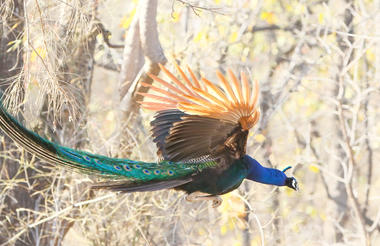
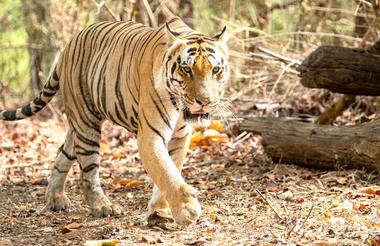
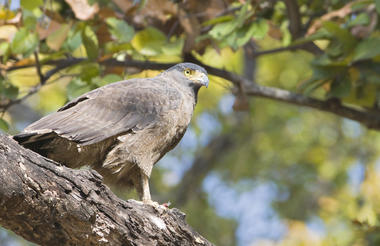
Early morning wake-up call with a knock on your room door and Tea/Coffee. You will wake up to misty mornings and sounds of birds calling, which will make an exciting start to your day. As soon as dawn breaks, leave for your Jungle Safari, accompanied by a resident naturalist and forest park guides in 4x4 Jeeps. A picnic breakfast in the middle of the Jungle with a cup of hot Tea or Coffee.
Rest of the morning at leisure or go for nature walk, visit to nearby village/school or engage yourself in cooking demonstration.
Lunch and afternoon safari by 4x4 open jeep.
Return to lodge for evening tea and rest of time free for star gazing.
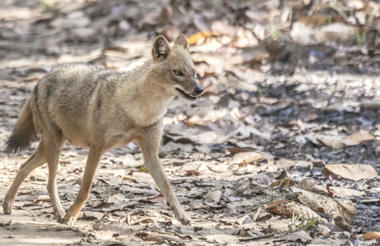
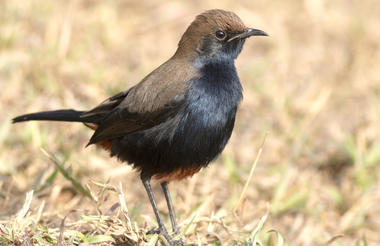
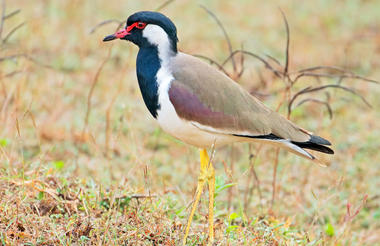
Early morning wake-up call with a knock on your room door and Tea/Coffee. You will wake up to misty mornings and sounds of birds calling, which will make an exciting start to your day. As soon as dawn breaks, leave for your Jungle Safari, accompanied by a resident naturalist and forest park guides in 4x4 Jeeps.
A picnic breakfast in the middle of the Jungle with a cup of hot Tea or Coffee.
Rest of the morning at leisure or go for nature walk, visit to nearby village/school or engage yourself in cooking demonstration.
Lunch and afternoon safari by 4x4 open jeep. (If afternoon parks are closed we will provide you Nature walk/bird watching tour on this day).
Return to lodge for evening tea and rest of time free for star gazing.



After morning safari drive to Bandhavgarh (6 hrs).
Bandhavgarh National Park: Set amongst The Vindhya Hills in Madhya Pradesh, Bandhavgarh consists of 168 sq miles of Sal & a mixed forest of bamboo, grassland, and a complex of deciduous forests. Declared as a national park in 1968 the Bandhavgarh National Park is spread across the area of 105 km². The name Bandhavgarh has been derived from the most prominent hillock of the area of Umaria. The area of Bandhavgarh is being flourished with a large biodiversity, the place which is also being famed to grip highest density of tiger population in India. There are at least 150 species of birds in the park, along with other mammals such as Tigers, Sloth Bear, Langur Monkeys, Wild Boar, Mongoose, 3 Kinds Of Deer - Chital, Sambar And Barking, to name a few.
Upon arrival check in to the lodge. Stay overnight at Taj Mahua Kothi.
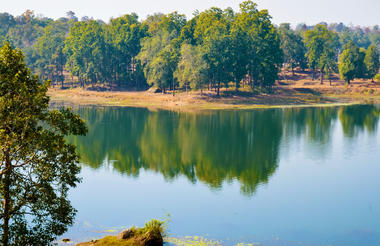
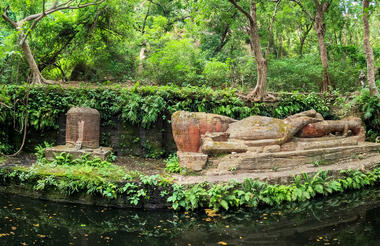
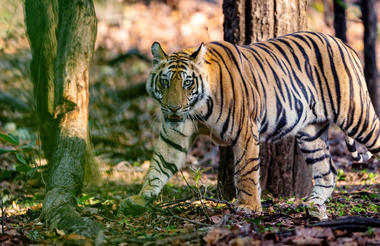
Early morning wake-up call with a knock on your room door and Tea/Coffee.
You will wake up to misty mornings and sounds of birds calling, which will make an exciting start to your day. As soon as dawn breaks, leave for your Jungle Safari, accompanied by a resident naturalist and forest park guides in 4x 4 Jeeps.
In the winter months morning safaris require warm clothes and woolen caps and gloves to keep you warm from the wind chill factor in your open jeep. We provide blankets and sometimes even a hot water bottle to keep you comfortable.
Lunch and afternoon safari by 4x4 jeep accompanied by resident naturalist and forest guide. Return to lodge for evening tea and rest of time free to relax.
Stay overnight at Taj Mahua Kothi.
Optional
During your stay Bandhavgarh you can opt Full day safari permits along with elephant safari (3 hrs) which provides route free access to the park for the full day.
Advantages of Full Day Permits:
¥No Zoning restriction
¥No routing restriction
¥This also allows them to be in the park from 15 min BEFORE the opening time of the
park to 15 min AFTER the closing time of the park.
¥Elephant safari for 03 hrs
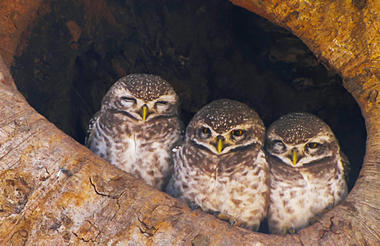
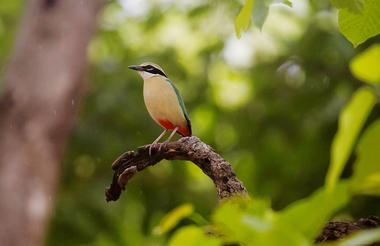
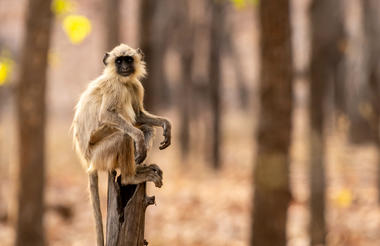
Early morning wake-up call with a knock on your room door and Tea/Coffee.
You will wake up to misty mornings and sounds of birds calling, which will make an exciting start to your day. As soon as dawn breaks, leave for your Jungle Safari, accompanied by a resident naturalist and forest park guides in 4x 4 Jeeps.
In the winter months morning safaris require warm clothes and woolen caps and gloves to keep you warm from the wind chill factor in your open jeep. We provide blankets and sometimes even a hot water bottle to keep you comfortable.
Lunch and afternoon safari by 4x4 jeep accompanied by resident naturalist and forest guide. Return to lodge for evening tea and rest of time free to relax.
Stay overnight at Taj Mahua Kothi.
Optional
During your stay Bandhavgarh you can opt Full day safari permits along with elephant safari (3 hrs) which provides route free access to the park for the full day.
Advantages of Full Day Permits:
¥No Zoning restriction
¥No routing restriction
¥This also allows them to be in the park from 15 min BEFORE the opening time of the
park to 15 min AFTER the closing time of the park.
¥Elephant safari for 03 hrs



Early morning wake-up call with a knock on your room door and Tea/Coffee.
As soon as dawn breaks, leave for Jungle Safari, accompanied by a resident naturalist and forest park guide in 4x 4 Jeeps.
Afternoon drive to Sarai at Toria (4 hrs). Sarai (or Serai) is an ancient Persian term for a roadside inn or caravanserai - Toria is the nearby village. The luxurious Sarai at Toria plays a positive role in the economic and social development of the local area; it also exists as a base for conservation activities and for wildlife and climate change research.
Our host, Dr Raghu Chundawat, is a conservation biologist immortalized in the BBC documentary "Tigers of the Emerald Forest", while his wife Joanna Van Gruisen is an accomplished photographer, writer, and conservationist. Both will join us for dinner at Sarai at Toria & discuss on conservation.(Subject to their availability).
Stay overnight at Sarai at Toria.
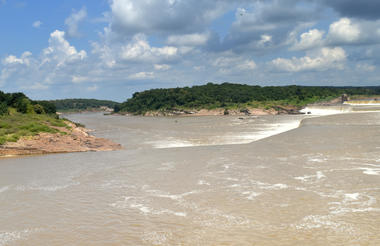
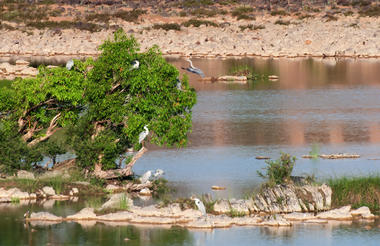
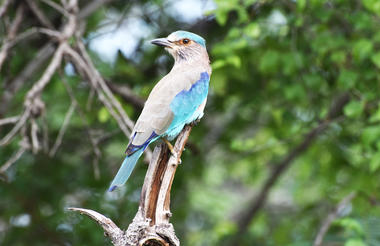
After breakfast check out from Sarai at Toria & drive to Khajuraho (45 min), on arrival proceed for sightseeing of eastern & western group of temples.
Khajuraho is well known for its magnificent temples, which were built between 950 and 1050 A.D. Khajuraho derives its name from the Khajur tree (the date palm tree) which can be found in abundance in the area. The divine sculptures in these temples are a tribute to life itself, embodying everything that is sublime and spontaneous about it. The murals depict the life and times of the Chandelas, and celebrate the erotic state of being. They not only testify to the mastery of the craftsman, but also to the extraordinary breadth of vision of the Chandela Rajputs under whose reign, these temples were constructed.
Transfer to the airport to board flight to Varanasi. Upon arrival at Varanasi, our representative will meet & transfer to hotel.
Varanasi, known to the devout as Kashi, is said to have been founded by Shiva, Lord of the Universe. One of the oldest living cities in the world, as also one of the most important pilgrimage sites in India, Varanasi is a major tourist attraction. Situated on the banks of the sacred Ganges, the city has been a center of learning and civilization for over 2000 years.
Upon arrival at Varanasi, our representative will meet & transfer to hotel.
Evening visit Dashaswamedh Ghat for glittering “aarti” ceremony of the holy river Ganges. Huge lamps are set ablaze and the priest holds forth the lamp as the multitude chants the hymns. You will be driven to a place called Benia bagh and from there walk to Dashaswamedh Ghat amidst crowded local market famous for spices, local shops, cloths and daily vendors selling fruits, pickles, vegetables etc on hand pulled carts.
Stay overnight at The Gateway hotel Ganges.
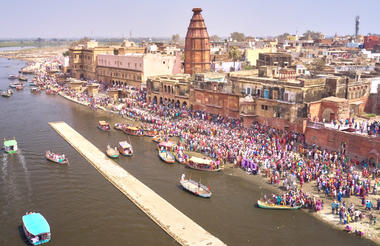
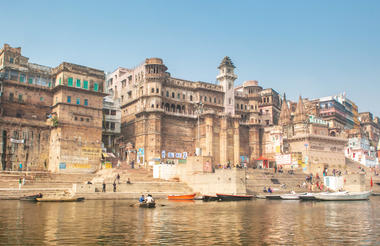
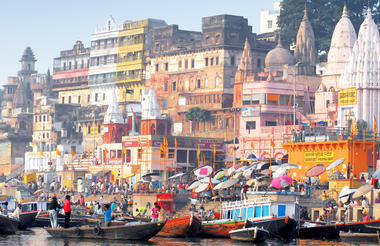
In the early morning drive to Dashaswamedh Ghat and take a boat ride on the sacred river Ganges to see the cremation Ghats and witness the living traditions of one of the world's oldest and most important religions. Board a boat with your guide and proceed to the middle of the river, where at sunrise the sight unfolds before you.
Later special walking tours of Southern Temples & Sacred Ponds Walk
A walk through the mystical landscape of poets, sacred temples, holy ponds near Assi ghat, the
southernmost embankment of the holy Ganga river. Walking the footsteps of 16th century Banaras poet and mystic Pandit GoswamiTulsidas, translator of the sacred Ramanyana text. You will hear about the history and special culture of Varanasi while visiting the Southern temple established by Tulsidas! The walk ends with a special darshan, meaning 'taking sight' of a hidden sun temple behind his home.
Later excursion to Sarnath, once of the most sacred places for Budhhist, where Lord Buddha gave first sermon after attaining enlightenment. Sarnath as previously been known as Mrigadava, "deer park," and Isipatana, meaning the place where holy men fell to earth. The latter name is based in the legend that when the Buddha was born, devas came down to announce it to 500 holy men. The holy men all rose into the air and disappeared and their relics fell to the ground.
The current name Sarnath, from Saranganath, means "Lord of the Deer" and relates to another old Buddhist story in which the Bodhisattva is a deer and offers his life to a king instead of the doe he is planning to kill. The king is so moved that he creates the park as a sanctuary for deer.
After his enlightenment in Bodhgaya, the Buddha went to Sarnath seeking his five former companions. He found them, taught them what he had learned, and they also became enlightened. This event is referred to as "the turning of the wheel of the Dharma" and also marks the founding of the Sangha, or the community of monks.
The places of interest at Sarnath are DhamekhaStupa, MulgandhaKutiVihar, Ashokan Pillar and Sarnath Archaeological Museum.
Evening walk with us through the city of learning & burning and see Banaras when it is known as ‘Mahashamstana’, the great cremation ground of Shiva. It is here will you will traverse from the land of the living to the houses of the dying.
Perhaps an encounter with a black-clothed flesh-eating sadhu of the Aghor Ashram will give you will a taste of death and rebirth! If you chose the daytime version a small puja at the Sankata Devi Temple (the goddess of sorrows & a demon slayer) is participated in. If you chose to do this walk at night it ends with a visit for the 10:30 – 11:15pm Sankata Devi ritual worship service!
Stay overnight at The Gateway hotel Ganges.



After breakfast transfer to the airport to board flight to Agra. Upon arrival in Agra, transfer to the hotel.
Agra - Badal Singh established the city of Taj in 1475 AD. Agra finds mention in the Mahabharat as Agraban. Sikandar Lodi made Agra his capital but Babur defeated the Lodis to capture not only Agra but also laid the foundation of the Mughal Empire. In the mid 16th century and earlier 17th century AD, Agra witnessed a fresn zied building activity and it was during this time when the symbol of love Taj Mahal was built.
Late afternoon visit to Agra Fort & Taj Mahal.
Agra Fort, a massive structure with 70-foot high, 1.5-mile long walls encompassing an astounding collection of well preserved buildings, many of them completed during the reign of Emperor Shah Jahan.The most unusual story about the Taj, is that there might have been two of them. The emperor intended to build a second tomb in black marble, a negative image of the white Taj for Mumtaz. Tragically, before he could begin, he was deposed by his son and imprisoned in the Agra Fort where he remained until his death, spending the rest of his life looking out along the river to the final resting-place of his wife.
Taj Mahal- Little needs to be said about this architectural wonder, which is always the soul raison-de-etre for every tourist's visit to Agra. Built by Shah Jahan, the Taj is a white marble memorial to his beautiful wife Mumtaz Mahal. This monument took 22 years to be completed and was designed, and planned by Persian architect Ustad Isa. Apart from its stunning design balance and perfect symmetry, the Taj is also noted particularly for its elegant domes, intricately carved screens and some of the best inlay work ever seen.
(Note: Taj Mahal remains closed on Fridays).
Stay overnight at ITC Mughal.
Optionally you can dine at Peshawari restaurant.
Peshawri: In a ambience reminiscent of the rustic charm of dining in the warmth of tents under a starry sky in the cold desert terrain of the North West Frontier, Peshawri brings to Agra an award winning menu of delicacies cooked in the clay tandoor.
Experience the wonder of this cuisine in Agra only at Peshawri, with a lavish spread of delicious kebabs – vegetarian and non-vegetarian that are cooked in myriad ways, a range of Indian breads – from the decadently indulgent to light and fluffy breads and of course, the inimitable Dal Bukhara – all of which is paired with an exclusive collection of wines and other beverages.



Rise early for morning coffee and prepare for a truly spectacular sight, the legendary Taj Mahal at daybreak. It is often said that Taj Mahal changes its colours by every minute depending upon angle of sunrays and it is best seen either by sunset or sunrise. Sunrise however is best timing for taking pictures of this monument under mild sun light.
After returning to your hotel for a full American breakfast, drive to Jaipur en-route visit Fatehpur Sikri.
Fatehpur Sikri: The Red Sandstone City, Emperor Akbar built as his capital and palace in the late 16th century. Also visit the Bulund Darwaza, the largest gateway in the world.
Upon arrival in Jaipur, check into the beautiful palace.
Jaipur: The capital city of the state of Rajasthan, also known as "Pink City" owes its name, its foundation and planning to the great warrior astronomer Maharaja Jai Singh II. The city sits on a dry lakebed in a wild and somewhat arid landscape, surrounded by barren hills surmounted by fortresses and crenellated walls.
Stay overnight at Taj Rambagh Palace.
Optional you can dine at 1135 A D: In the evening drive to Amber Fort in house restaurant famously known as 1135 AD. As the name suggest this themed restaurant showcases the grandeur and opulence of the bygone era when Amber fort was constructed. With classic architecture, mirror inlay with gold motifs on the ceiling/ walls co ordinate with pure silver cutlery. Atop amber, enjoy the experience of fine dining in the king’s courtyard with mouth-watering local delicacies especially prepared for you by the expert culinary chef.
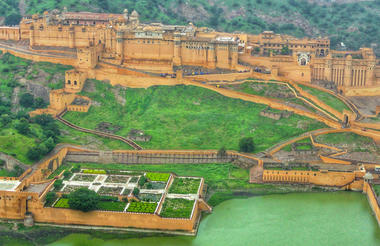
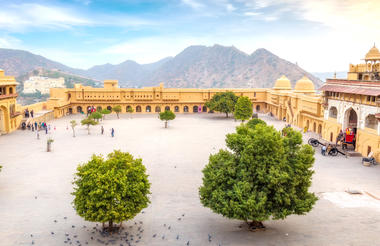
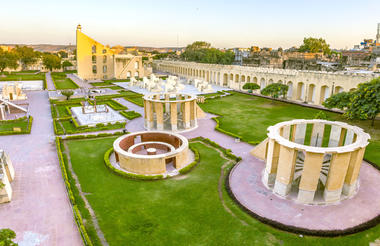
After breakfast proceed for excursion of Amber Fort and Cycle rickshaw tour.
Morning proceed for Gems of Jaipur City Tour: This morning visit the magnificent Amber Fort, the most iconic monument of Jaipur .You can have the experience of travelling on Jeep ride to the top of the hill where the fort is situated. Housing many palaces, halls, gardens, and temples. Including Sheesh Mahal, an elaborate mirror Palace work adds to the grandeur of this historic part, a visit to Amber is indeed well worth.
Later embark on our uniquely designed Cycle Rickshaw tour. This tour is planned to offer you an insight on the socio economic aspects of the city. Every lane in the walled city has something interesting to offer and the relaxed Rickshaw ride is the best way to explore the city like the locals do.
Later Wonders of Pink City Tour: For the visitor, the Pink City of Jaipur is definitely a feast for the eyes. This planned city built in AD 1727 by a visionary King Sawai Jai Singh II. He designed a city so perfect, so beautiful, the likes of which cannot be found the world over.
Join us on this memorable guided tour to visit City palace, the residence of the present Royal family who have opened their gates to visitors and converted a part of their palace into a museum. Afterwards visit the Observatory (Jantar Mantar) which boasts of having the largest Sun Dial of the World.
Return back to the hotel.
Stay overnight at Taj Rambagh Palace.
Optionally cooking demo along with Dinner at Jaipur: The cooking demonstration and meal involves the cooking instructor working and demonstrating to the guests all ingredients and techniques neatly typed cooking recipes in a Sanganeri handmade paper folder given as a take away to every guest.
Our cooking demonstration is unique in as much that it covers ingredients and recipes of Rajasthan which the guest easily replicate. The guest also works hands on and can cook on the cooking station.
We would like to show and serve dishes which normally the guests would not find easily. The reference is both to ingredients, techniques and different segments of citizens preparing and having these dishes.
Shri and Shrimati Durga Singh ….Smt …Usha Kumari is a keen enthusiastic cook and instructor. Shri Durga Singh developed his interest in cooking while translating for royal chefs at Jodhpur to visitors and camping while on horse and camel safaris.
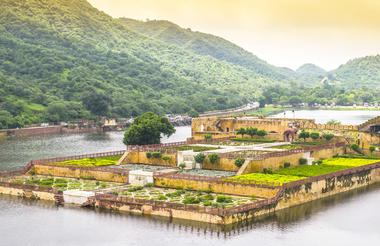
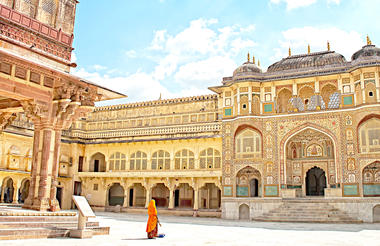
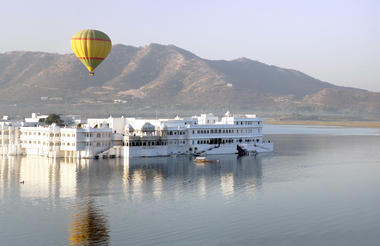
Optional Hot Air Balloon Safari:
A Balloon Safari not only offers you the opportunity to see India and its spectacular forts, hidden palaces, breathtaking terrain and traditional local villages from a very unique perspective but also the chance to meet the friendly people that make this country such a vibrant, energetic & diverse place . Your Balloon Safari will take you where no tour itinerary will and every flight is a totally new adventure.
Hot air ballooning can take place either in the morning or late afternoon as days are already unbearably hot. The balloon is launched from various places depending upon weather and wind direction.
After breakfast and check out and drive back to Delhi (270 kms / 5-6 hrs).
Meet upon arrival at airport and transfer to the hotel Radisson Blu Plaza for Wash and Change.
On time transfer to international terminal to board your flight to home by NH-828 at 0125 hrs on 09 Apr.





